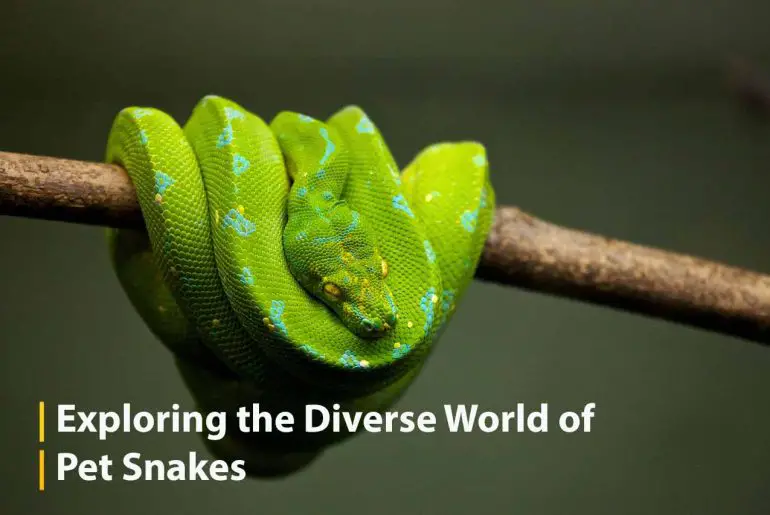Embracing Serpentine Companionship
The world of pet ownership is as diverse as the creatures that share our homes, and for those seeking an unconventional yet intriguing companion, the slithering charm of snakes may be just the answer. Far from the menacing creatures portrayed in folklore, many snake species make excellent and captivating pets. From the enchanting patterns of a ball python to the vibrant hues of a corn snake, each offers a unique appeal that defies common misconceptions.
In this exploration of serpentine companionship, we delve into the realm of snake keeping, shedding light on five captivating species that stand out as ideal choices for those looking to welcome a reptilian friend into their lives. Beyond their mystique, these snakes boast characteristics that make them suitable for various levels of expertise, from beginners to seasoned reptile enthusiasts. So, let’s slither into the fascinating world of snake companionship and discover why these ten serpents deserve a place in our homes.
1. Ball Python: The Gentle Giant
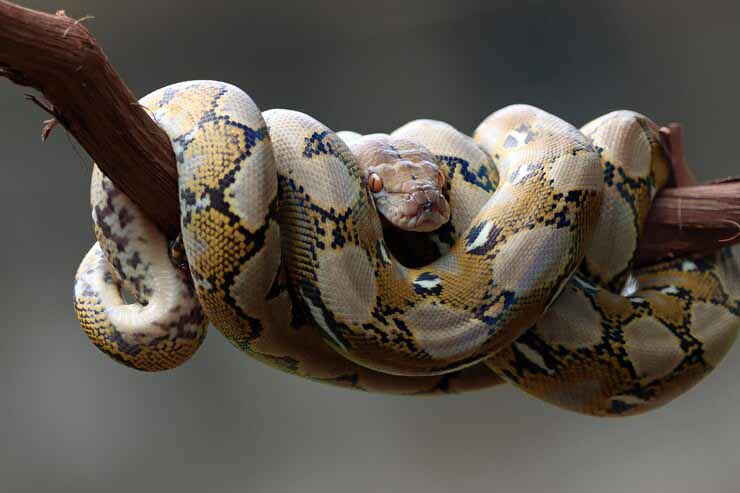
The ball python (Python regius), also known as the royal python, has earned its place as one of the most popular snake species in the pet trade. Originating from West and Central Africa, these snakes have become favorites among reptile enthusiasts for their manageable size, striking patterns, and calm demeanor.
Physical Characteristics: Ball pythons are relatively small compared to other python species, with adults typically reaching lengths of 3 to 5 feet. Their name is derived from their defensive habit of curling into a ball when stressed or threatened, with their head tucked in the center. They showcase a stunning array of color and pattern variations, including morphs that have captivated breeders and collectors alike.
Temperament: One of the key attractions of ball pythons as pets is their docile and gentle nature. These snakes are known for their calm disposition, making them suitable for novice snake keepers. Ball pythons are generally tolerant of handling, though it’s important to approach them with care, especially during shedding or after a meal.
Habitat and Enclosure: Creating the right environment is crucial for the well-being of ball pythons. Provide a secure and appropriately sized enclosure with a hiding spot, water bowl, and a temperature gradient. Ball pythons are sensitive to temperature, so maintaining a proper thermal gradient is essential. Substrate choices can include aspen shavings or coconut coir.
Feeding: Ball pythons are constrictors and primarily eat small mammals like mice and rats. They have a reputation for being good eaters, but it’s essential to establish a regular feeding schedule. Younger snakes may require more frequent feedings, while adults can be fed less often.
Health Considerations: Regular health checks are crucial for snake owners. Keep an eye on their shed cycles, ensure proper humidity levels, and be attentive to signs of respiratory infections or other health issues. Veterinary care from a reptile specialist may be necessary if any concerns arise.
In conclusion, the ball python stands out as an excellent choice for those entering the world of snake ownership. Their manageable size, beautiful patterns, and gentle temperament make them a delightful addition to any reptile enthusiast’s collection. With proper care and attention to their unique needs, ball pythons can thrive as engaging and captivating pets.
Certainly! Let’s explore the details of the Corn Snake section.
2. Corn Snake: Beginner’s Color Palette
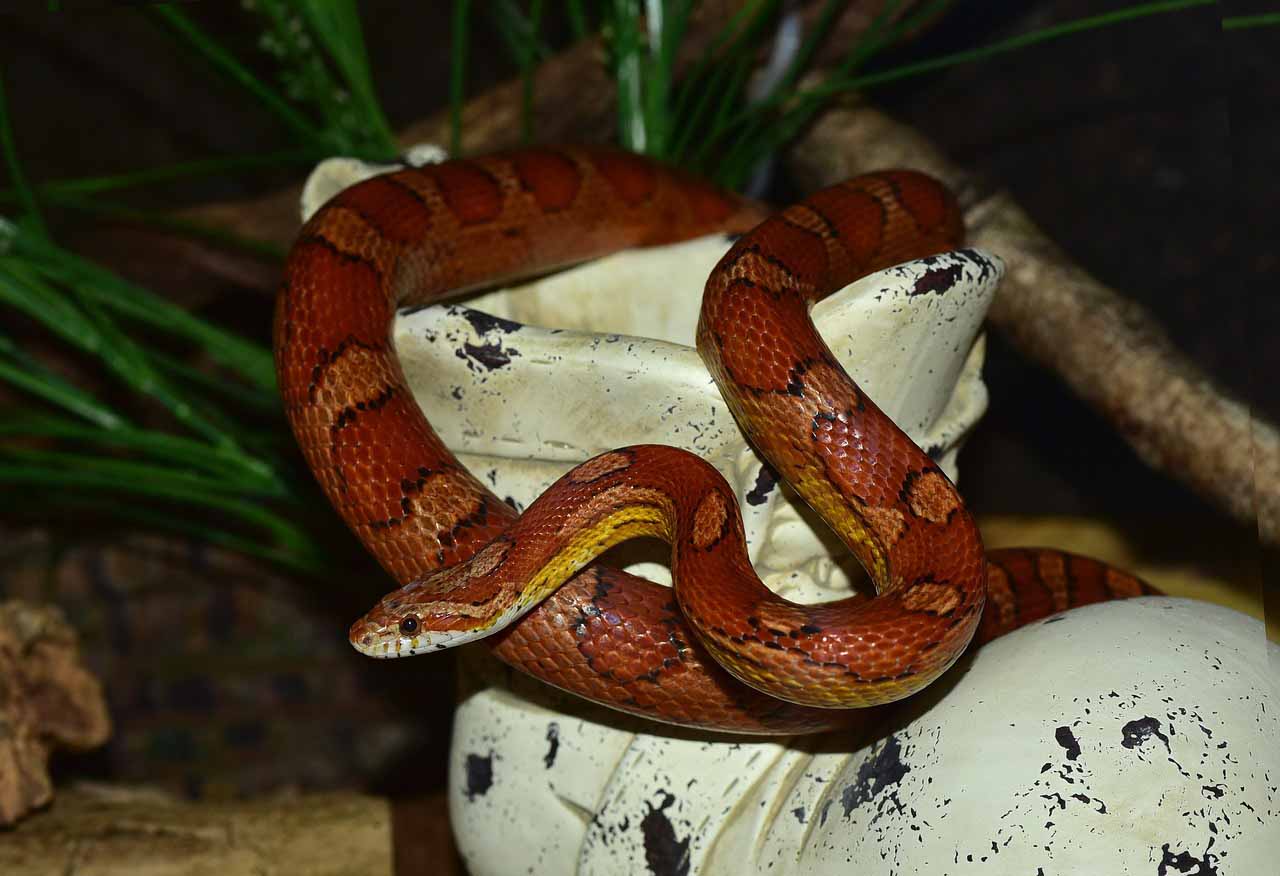
The corn snake (Pantherophis guttatus), hailing from North America, has long been cherished as an ideal entry point into the world of snake ownership. Their striking colors, ease of care, and generally docile nature make them a popular choice for beginners and experienced herpetologists alike.
Physical Characteristics: Corn snakes are a medium-sized species, typically ranging from 3 to 5 feet in length. What sets them apart is their vivid coloration and pattern variations. From vibrant oranges and reds to subtle earth tones, the corn snake’s palette is a testament to nature’s artistry. They have smooth scales, and their slender build allows for graceful movement.
Temperament: Known for their calm and non-aggressive behavior, corn snakes are often recommended for those new to snake keeping. They are generally easy to handle and adapt well to captivity. While occasional hissing might occur if they feel threatened, bites are rare, making them a favorite among pet owners.
Habitat and Enclosure: Creating a suitable habitat is essential for the well-being of corn snakes. A secure enclosure with proper hiding spots, a water bowl, and a substrate that allows burrowing is recommended. Corn snakes are active climbers, so providing branches or other climbing structures can enhance their environment. Maintaining a temperature gradient is crucial, and they thrive in environments with moderate humidity.
Feeding: Corn snakes are constrictors and primarily feed on small rodents. Their feeding schedule can vary based on age, with younger snakes requiring more frequent meals. Prey items should be appropriately sized to the snake’s girth. As with all snakes, a consistent feeding schedule is essential for their health.
Health Considerations: Regular health check-ups, monitoring for signs of shedding issues, and ensuring proper humidity levels are crucial aspects of corn snake care. Like all snakes, they are susceptible to respiratory infections, so maintaining a clean and appropriately humid environment is vital.
In conclusion, the corn snake’s captivating colors, calm temperament, and relatively straightforward care requirements make it an excellent choice for both novice and experienced snake enthusiasts. With the right habitat and attention to their needs, corn snakes can bring a burst of color and joy into the homes of reptile lovers.
3.Garter Snake: Petite Elegance in Nature’s Palette
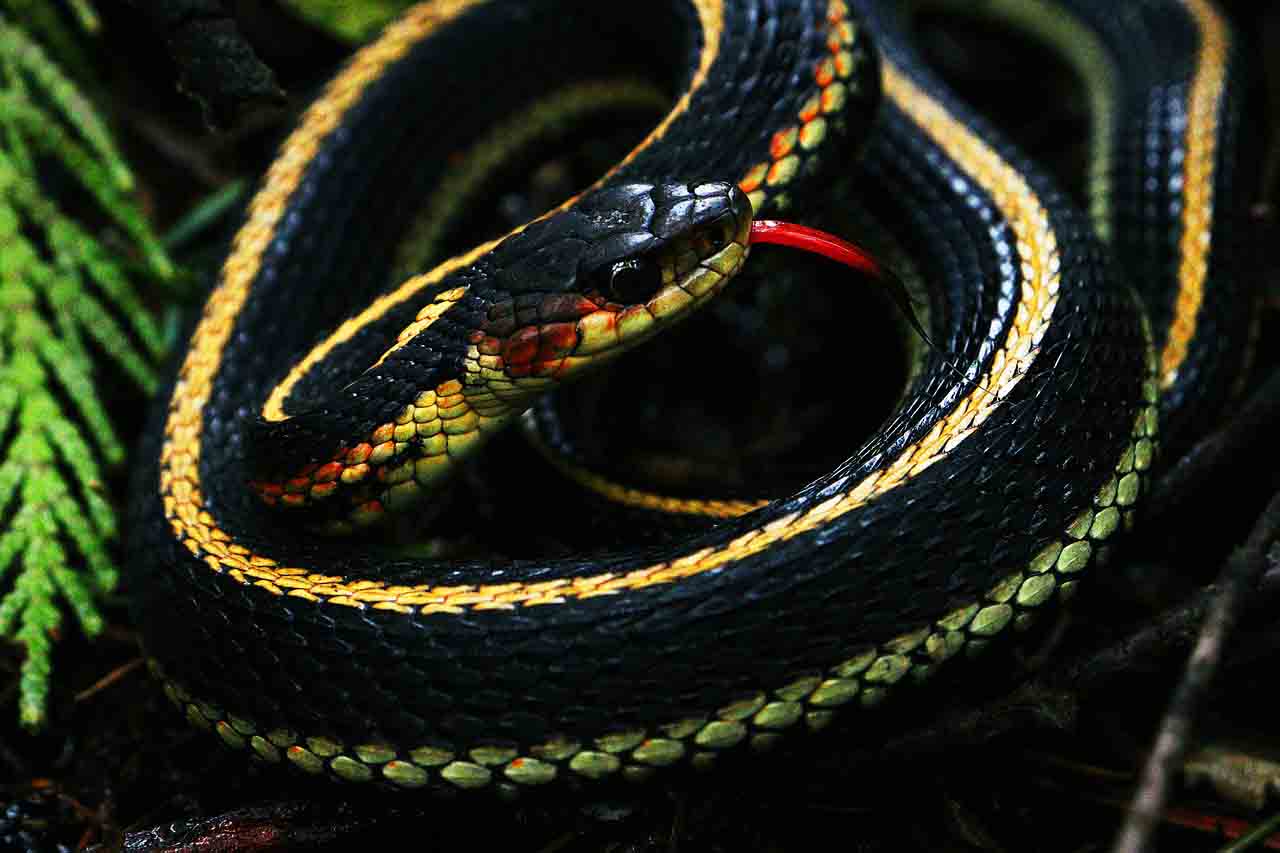
In the realm of serpentine companionship, the Garter Snake (Thamnophis spp.) emerges as a petite yet elegant member. Widely distributed across North America, these snakes captivate enthusiasts not only with their manageable size but also with their varied coloration and interesting behaviors. Join us in uncovering the charm of this delightful snake species.
Physical Characteristics: Garter snakes are relatively small, typically ranging from 1 to 4 feet in length, depending on the species. Their slender bodies are adorned with a diverse array of colors and patterns, ranging from vibrant greens and yellows to subtle browns and blacks. Some even exhibit stripes or checkered patterns along their length.
Temperament: Known for their calm and adaptable nature, Garter Snakes are often considered ideal for those new to snake ownership. They are known to tolerate handling well, and with gentle interactions, they can become comfortable with their owners. Garter snakes are generally active and curious, making them engaging companions.
Habitat and Enclosure: Creating a suitable habitat for Garter Snakes involves replicating their semi-aquatic natural environment. A secure enclosure with a water feature, a basking area, and hiding spots is essential. Garter snakes are excellent swimmers, so providing an environment that accommodates both land and water is crucial for their well-being.
Feeding: Garter snakes have a varied diet that includes amphibians, fish, worms, and small rodents. Their feeding habits contribute to their charm, as they are known to consume prey in a captivating manner. Offering a diverse and appropriately sized diet is key to their health and well-being.
Health Considerations: Routine health checks, monitoring for signs of shedding issues or respiratory problems, and ensuring a clean and appropriately humid environment are essential for Garter Snake care. As with all snake species, prompt veterinary attention should be sought if any health concerns arise.
In conclusion, the Garter Snake’s petite elegance, calm demeanor, and adaptability make it an excellent choice for snake enthusiasts of all levels. With its vibrant colors and engaging behaviors, the Garter Snake adds a touch of nature’s palette to the diverse world of pet snakes. With proper care and consideration of their habitat, Garter Snakes can thrive as charming and undemanding companions in the realm of snake keeping.
4. Rosy Boa: Small, Calm, and Beautiful
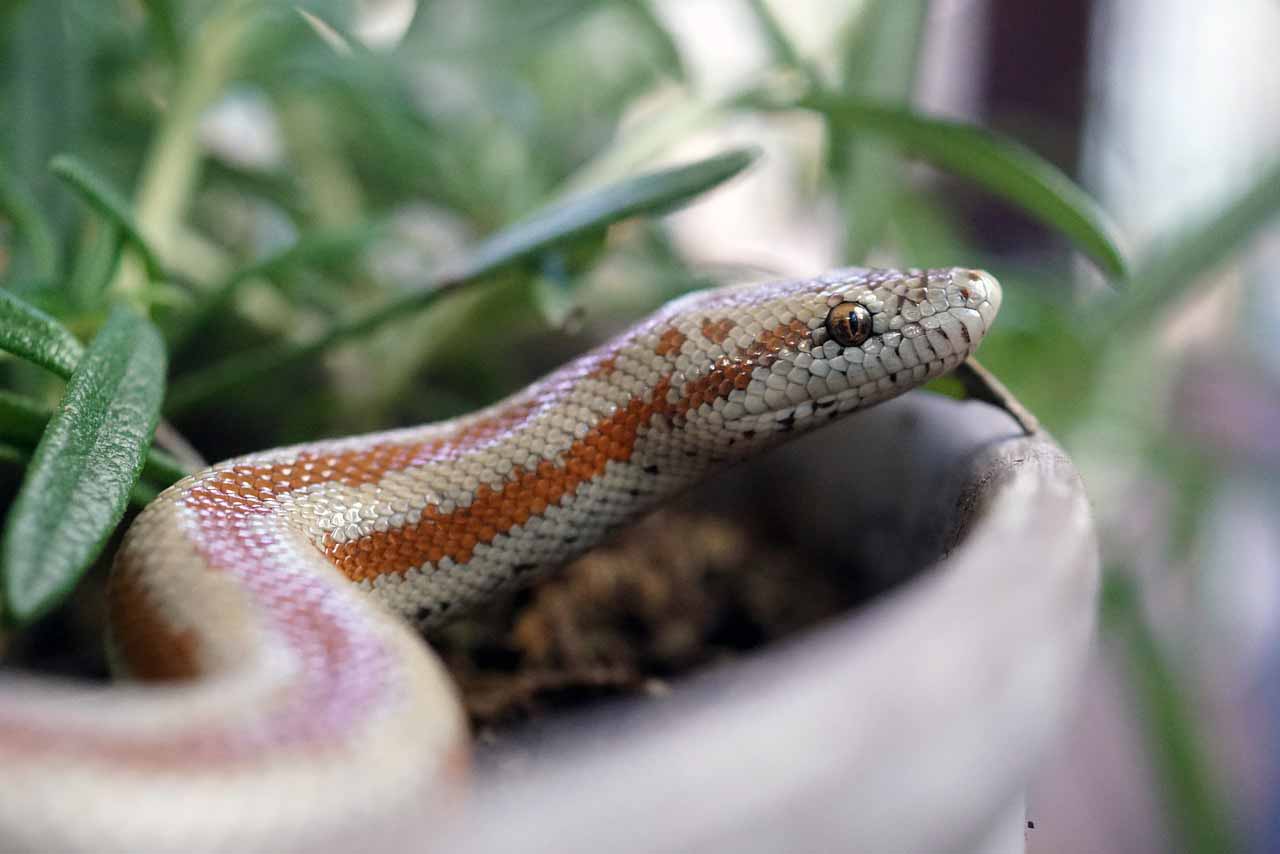
The rosy boa (Charina trivirgata) stands as a charming representative of the snake world, renowned for its small size, calm demeanor, and captivating appearance. Native to the arid regions of the southwestern United States and Mexico, the rosy boa is an excellent choice for snake enthusiasts seeking a unique and manageable companion.
Physical Characteristics: Rosy boas are relatively small snakes, with adults typically reaching lengths between 2 to 3 feet. What sets them apart is their distinctive appearance, featuring a series of dark bands or blotches against a background of pink, tan, or brown scales. Their smooth and glossy appearance adds to their allure.
Temperament: Renowned for their calm and gentle temperament, rosy boas are often considered ideal for both beginner and experienced snake keepers. While individual personalities may vary, these snakes are generally docile and can tolerate handling well. Regular, gentle interactions can help strengthen the bond between the snake and its owner.
Habitat and Enclosure: Creating a suitable habitat is vital for the well-being of rosy boas. Due to their natural habitat in arid regions, provide a substrate that allows for burrowing, such as aspen shavings or coconut coir. A hiding spot and a basking area are essential, and maintaining a proper temperature gradient is crucial for their health.
Feeding: Rosy boas primarily feed on small rodents, and their feeding schedule can vary based on age. Younger snakes may require more frequent meals, while adults can be fed less often. Offering appropriately sized prey items and monitoring their feeding habits are essential aspects of their care.
Health Considerations: Routine health checks, ensuring proper humidity levels, and monitoring for signs of respiratory infections or shedding issues are crucial for rosy boa care. As with any snake, be attentive to changes in behavior or appearance, and consult with a reptile veterinarian if health concerns arise.
In conclusion, the rosy boa’s small size, calm demeanor, and distinctive appearance make it an appealing choice for snake enthusiasts. With the right care and attention to their environmental needs, rosy boas can thrive as delightful and visually striking companions in the world of snake keeping.
5.Hognose Snake: The Quirky Charmer with a Unique Defense
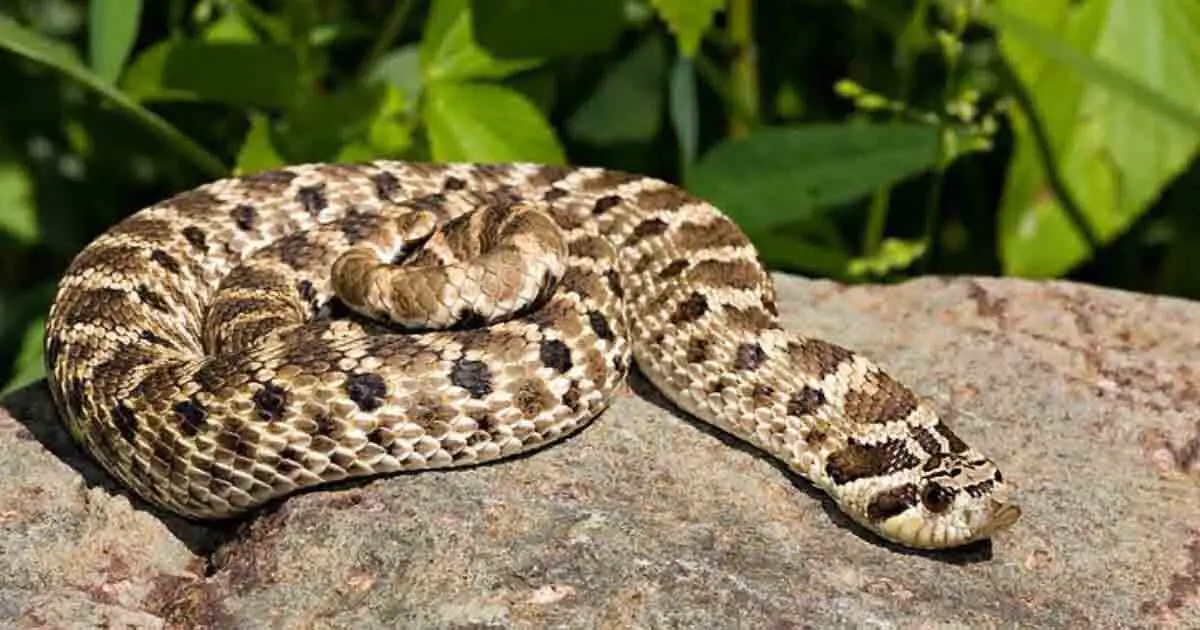
Meet the Hognose Snake (Heterodon spp.), a quirky and captivating species that adds a touch of charm to the world of snake keeping. Known for its distinctive appearance and fascinating defensive behaviors, this snake species stands out as a unique and engaging choice for enthusiasts seeking a one-of-a-kind companion.
Physical Characteristics: Hognose snakes are medium-sized, with adults typically reaching lengths of 1 to 3 feet. They are characterized by a upturned snout, giving them a distinctive hognose shape. Their coloration can vary, ranging from earthy tones to vibrant patterns, and they often exhibit markings that enhance their individuality.
Temperament: While individual personalities can vary, Hognose Snakes are generally known for their calm demeanor. They may exhibit quirky behaviors, including burrowing and exploring their surroundings. Hognose snakes are typically good candidates for handling, but it’s important to be aware of their unique defensive tactics.
Habitat and Enclosure: Creating an optimal habitat for Hognose Snakes involves providing a secure enclosure with hiding spots and a substrate that allows for burrowing. These snakes may appreciate a slightly more humid environment, so maintaining proper humidity levels is crucial. An appropriately sized water bowl and a temperature gradient should be included in their habitat.
Feeding: Hognose snakes are primarily carnivorous, with a diet that includes rodents, amphibians, and sometimes lizards. It’s important to offer appropriately sized prey items, and some individuals may prefer scented or more enticing prey to stimulate their feeding response.
Unique Defense Mechanism: One of the most intriguing aspects of Hognose Snakes is their unique defensive behavior. When threatened, they may flatten their necks, hiss loudly, and even play dead by rolling onto their backs. While this behavior is not harmful, it adds a touch of theatrics to their captivating personality.
Health Considerations: Routine health checks, monitoring for signs of shedding issues, and ensuring a clean environment are essential for Hognose Snake care. Be attentive to their feeding responses, and consult with a reptile veterinarian if any health concerns arise.
In conclusion, the Hognose Snake’s quirky charm, unique appearance, and fascinating defense mechanisms make it a delightful addition to the diverse world of pet snakes. With proper care and consideration of their habitat, Hognose Snakes can thrive as engaging and entertaining companions, showcasing the intriguing diversity within the realm of snake keeping.
Watch this for more Knowladge :
Conclusion: Embracing the Diversity of Serpentine Companionship
In the captivating world of snake ownership, we’ve explored ten remarkable species, each with its own unique charm and characteristics that make them suitable for a variety of snake enthusiasts. From the gentle giants like the ball python to the vibrant corn snake, the majestic boa constrictor to the resilient king snake, and the visually striking milk snake to the small yet charming rosy boa, these serpentine companions offer a spectrum of possibilities for those seeking unconventional and engaging pets.
Through this exploration, we’ve debunked myths, highlighted the importance of responsible ownership, and provided insights into the proper care and considerations for each species. It’s evident that snakes, often misunderstood, can be rewarding and fascinating companions when their needs are met with care and respect.
As with any pet, the decision to bring a snake into your home comes with responsibilities. Proper housing, nutrition, regular health checks, and understanding the unique behaviors of each species are paramount. The bond between a snake and its owner can be cultivated through patience, consistent care, and a deep appreciation for the beauty these creatures bring to our lives.
Whether you’re a seasoned reptile enthusiast or a novice considering your first slithery companion, the diverse array of snake species provides an opportunity to explore, learn, and appreciate the wonders of the natural world. Each snake, with its individual traits and adaptations, contributes to the rich tapestry of serpentine companionship, offering a unique and fulfilling experience for those willing to embrace the enchanting world of snakes as pets.
